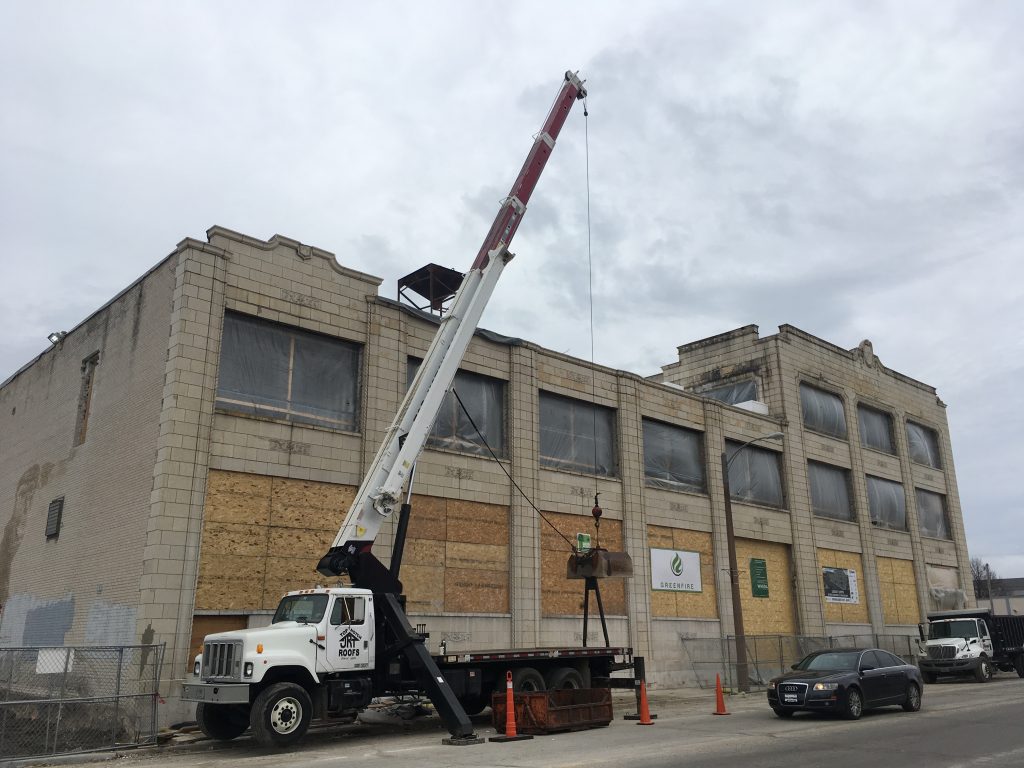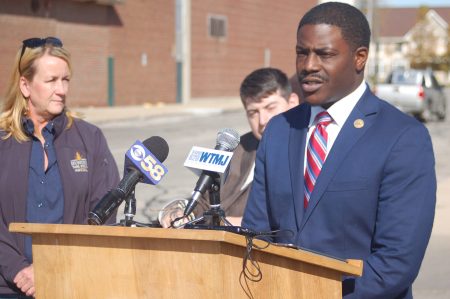New Federal Program Could Help City
Opportunity Zones law allows tax incentives for distressed areas.

The former Blommer Ice Cream Factory, at 1500 W. North Ave., is being converted into a 64-unit housing complex, with the help of tax incremental financing. Photo by Elliot Hughes.
A delegation of Milwaukee state legislators is hoping that a new program tucked away in the federal tax cut bill signed into law late last year could reel in investment to the city’s most distressed neighborhoods.
Under the new program, governors can nominate economically struggling census tracts within their states to become “Opportunity Zones,” where investments will be subject to various tax incentives.
The Milwaukee Democratic Legislative Caucus recently wrote a letter to Gov. Scott Walker calling on him to nominate as many eligible Milwaukee census tracts as possible in Wisconsin’s application to the U.S. Treasury Secretary, which certifies nominated areas as Opportunity Zones.
Governors were allowed to nominate 25 percent of the census tracts within their state that qualify for the program. Out of 120 nominations submitted Wednesday, Milwaukee scored 34, more than three times as many as the second-place municipality, Madison, with 10.
It is unclear how long it will take the Treasury Secretary to make the final designations.
Rep. Jason Fields, who represents the Havenwoods area, said he hoped the program could help projects in affordable housing, education and other community-building developments.

Rep. David Crowley, pictured in October 2017, said Milwaukee’s neighborhoods present a good opportunity for the Opportunity Zones program due to their proximity to the booming downtown. Photo by Edgar Mendez.
“We have the new Bucks arena, we have the new Northwestern (Mutual Tower),” Fields said. “But are we increasing the demand for projects like affordable housing? Are we developing places where entire neighborhoods will redevelop and grow better?”
Before the nominations were released, Rep. David Crowley, who represents the Grasslyn Manor–Columbus Park area of the North Side, said that the delegation would be happy to see any part of the state receive the Opportunity Zone certification. But he argued that the program’s incentives would pair well with Milwaukee’s downtown development boom and that the entire state would reap the benefits.
“We are the economic engine of the state,” Crowley said. “The reality is, if we can do much more for this city and build this city up even more, then we have an opportunity to give more back to the state. Revitalizing this area does much more than just [benefitting] Milwaukee. It does a lot for the state of Wisconsin.”
The Opportunity Zones program was designed to help distressed communities still struggling from the effects of the Great Recession. According to the Economic Innovation Group, 52.3 million Americans, or 17 percent of the population, live in economically distressed communities.
The letter to Walker stated there are 165 eligible tracts in Milwaukee alone, accounting for nearly 35 percent of Wisconsin’s eligible tracts.
Tracts qualify for the program if they are in a low-income community, or if the tract borders a low-income community and its median family income does not exceed 125 percent of the median family income of the low-income neighborhood that it borders.
Walker’s office convened an interagency working group and consulted with a “nationally respected consulting firm” as well as local leaders to determine the state’s nominations, spokesperson Amy Hasenberg said in a statement.
“Governor Walker is optimistic about the potential benefit that Opportunity Zones will have bringing jobs and growth to communities across Wisconsin,” Hasenberg said.
The letter to Walker was signed by Crowley, Fields and representatives Fred Kessler, JoCasta Zamarripa, Evan Goyke, Josh Zepnick, Christine Sinicki, and Leon Young; and senators Lena Taylor, Tim Carpenter, Chris Larson and LaTonya Johnson. All are Democrats.
This story was originally published by Milwaukee Neighborhood News Service, where you can find other stories reporting on eighteen city neighborhoods in Milwaukee.
Political Contributions Tracker
Displaying political contributions between people mentioned in this story. Learn more.
- June 3, 2019 - JoCasta Zamarripa received $100 from Christine Sinicki
- April 24, 2019 - JoCasta Zamarripa received $30 from Josh Zepnick
- June 16, 2016 - David Crowley received $200 from Fred Kessler
- April 1, 2015 - Josh Zepnick received $50 from Evan Goyke
- March 30, 2015 - Josh Zepnick received $50 from Tim Carpenter
- March 30, 2015 - Josh Zepnick received $100 from JoCasta Zamarripa



















